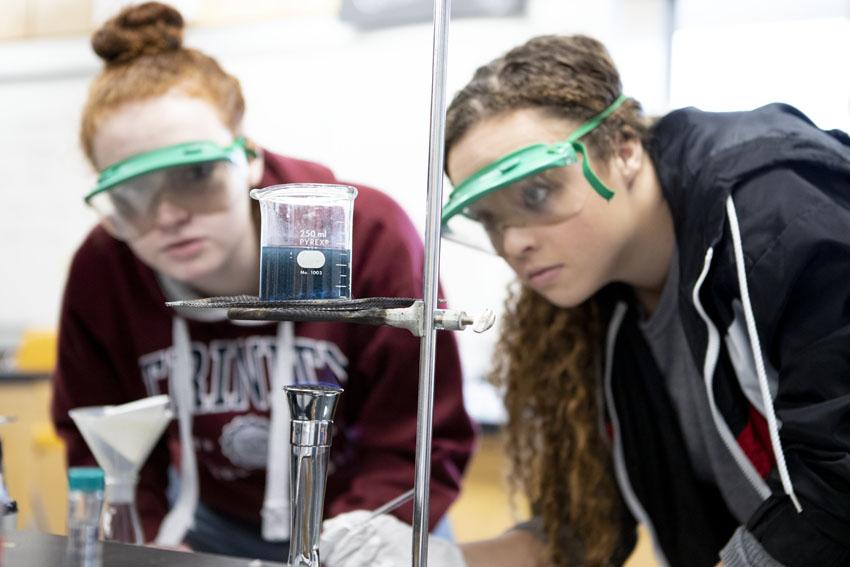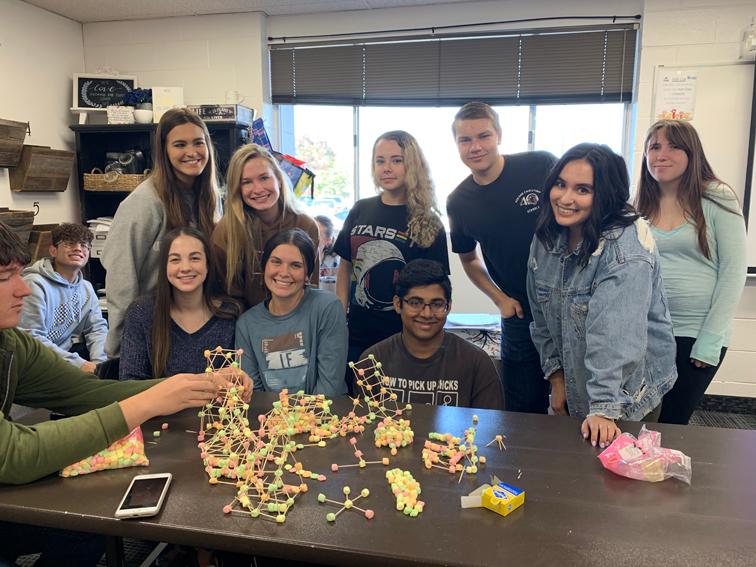
Sophomores Adalyn Richardson and Hannah Villines participate in a copper cycle lab during chemistry teacher Scott Bucher’s third period class, Jan. 9.
Each lab group conducted their own experiment by converting copper to six different forms. All the groups attempted to end with the same substance they started with, pure copper.
The goal of this lab is to show students how the Law of Conservation of Mass works. The first conversion the copper undergoes is from copper to copper II nitrate.
To complete this conversion, students first clean a piece of copper wire with steel wool and place the copper in a beaker. They then add concentrated nitric acid to dissolve the copper wire and swirl the beaker. Throughout all of the conversions that take place during the experiment, the copper neither gains nor loses any of its mass.
Chemistry student, Adalyn Richardson, ’21, shares how conducting experiments in a lab helps her understand the material being taught in class in a more visual way.
“Participating in labs during Chemistry contributes to my knowledge in the class with my kinesthetic learning ability,” Richardson said. “You can see an equation written out, but you won’t be able to understand what happens until you do it in the lab. Seeing and understanding what equations we are doing on paper is important.”
By allowing students to participate in labs, Bucher brings his lectures to life for students in his classroom.
For more on FC science visit, Campus science teacher encourages hands-on learning, by Annaleise Anderson.
For more Feather photos, visit media, photos 2018-19.




